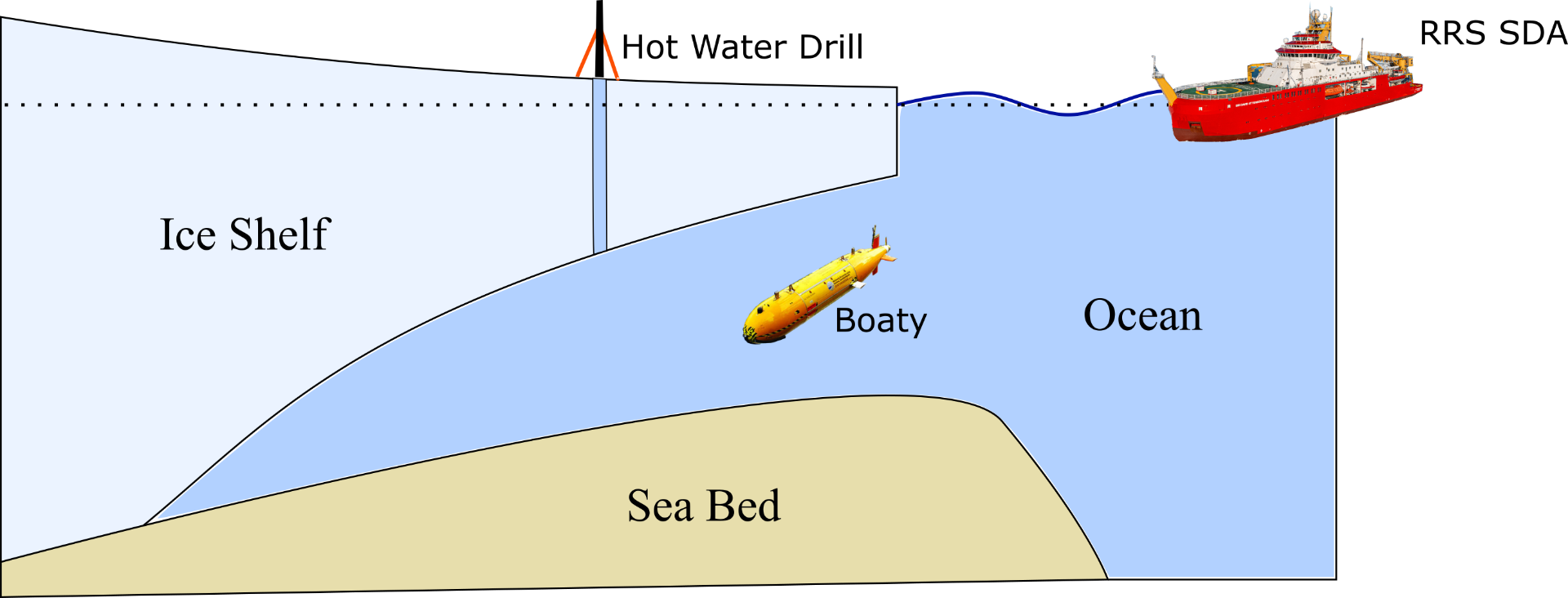By: Ryan Patmore
I am an Oceanographer and I occasionally spend my time trying to find the best ways of understanding the point where ice meets the ocean. This naturally draws me to Antarctica – covered in penguins, yes, but also ice. Antarctica is a mountainous land mass with continuous ice overlain and an ice thickness of several kilometres in places. The ice covering Antarctica is estimated to hold the equivalent of 58 m in sea-level rise (Morlighem et al. 2020). Without it, many parts of the world would be engulfed in water and once inland towns would transform into coastal communities. In a world without Antarctic ice you might, for example, find seaside resorts such as Milton-Keynes-On-Sea. Thankfully, this is an extreme example and an unlikely scenario. Though, whilst we can be fairly comfortable in the knowledge that an ice melt induced wave of 58 m isn’t going to appear on the horizon any time soon, the threat of melting ice around Antarctica is a concern. Understanding the risks is an important endeavour.

Figure 1: Schematic representation of an ice shelf cavity depicting some examples of the available observational tools.
So how do we know whether or not Antarctic ice is here to stay, or more specifically, how much of it is going to stick around? The ice that lies upon Antarctica behaves a bit like gloopy honey. It is very dynamic and often channels off the continent and into the sea. This location, where ice meets ocean, is an important place for understanding potential sea-level rise. Since ice is less dense than water, when glacial ice contacts the ocean, it tends to float, creating a shelf-like layer of ice called an ice shelf with caverns of ocean below – as shown in Figure 1. In certain locations around Antarctica these caverns are filled with water at a balmy temperature of 1 oC (brrrrrr). Although this may sound cold, this water is considered very warm and can lead to significant melting. The process of the ocean melting the ice from beneath an ice shelf is a ‘hot’ topic when it comes to understanding the loss of ice around Antarctica and is considered one of the main drivers for ice loss in recent times (Rignot et al. 2013).
Understanding the problem of ice shelf melt requires data. The cavities formed by ice draining into the sea are immensely interesting and an important part of the climate system, but at the same time they are notoriously difficult to access. To observe this environment is no small feat. A product of these difficulties has been innovation and we now have a variety of tools at our disposal, one of which is the famous Boaty McBoatface! This robotic submarine can be deployed from the UK’s shiny new polar ship, the SDA, and travel to the depths of the ocean, entering territory under ice shelves which until now has been entirely unexplored. Another method of observation is to drill from above. For several decades now, scientists have been coring through ice to mammoth depths in order to access the cavities from the surface, with the capability of drilling up to 2300 m. This means if Yr Wyddfa (Snowdon) was made of ice, it could be drilled through twice over. Observations are continuously pushing the boundaries but there are additional tools that gather insight without setting foot on either a boat or an ice shelf. This option is numerical modelling, which is often my tool of choice. Models can take you where instruments cannot and a theory can be tested at the touch of a button. This may sound like a silver bullet, but caution is needed and observations remain paramount for modelling to be successful. After all, without observations, who knows which reality is being modelled. All in all, some exciting things are happening in ice-ocean research and the ever expanding tool-kit is continuously opening doors for understanding this challenging environment.
